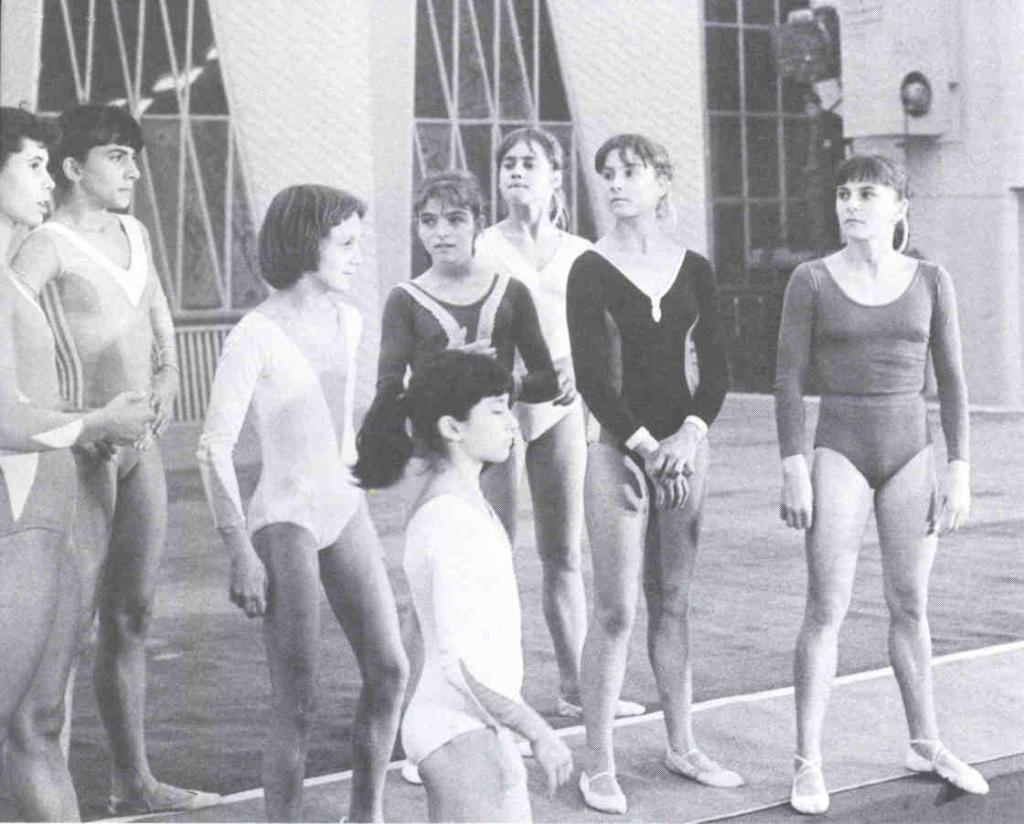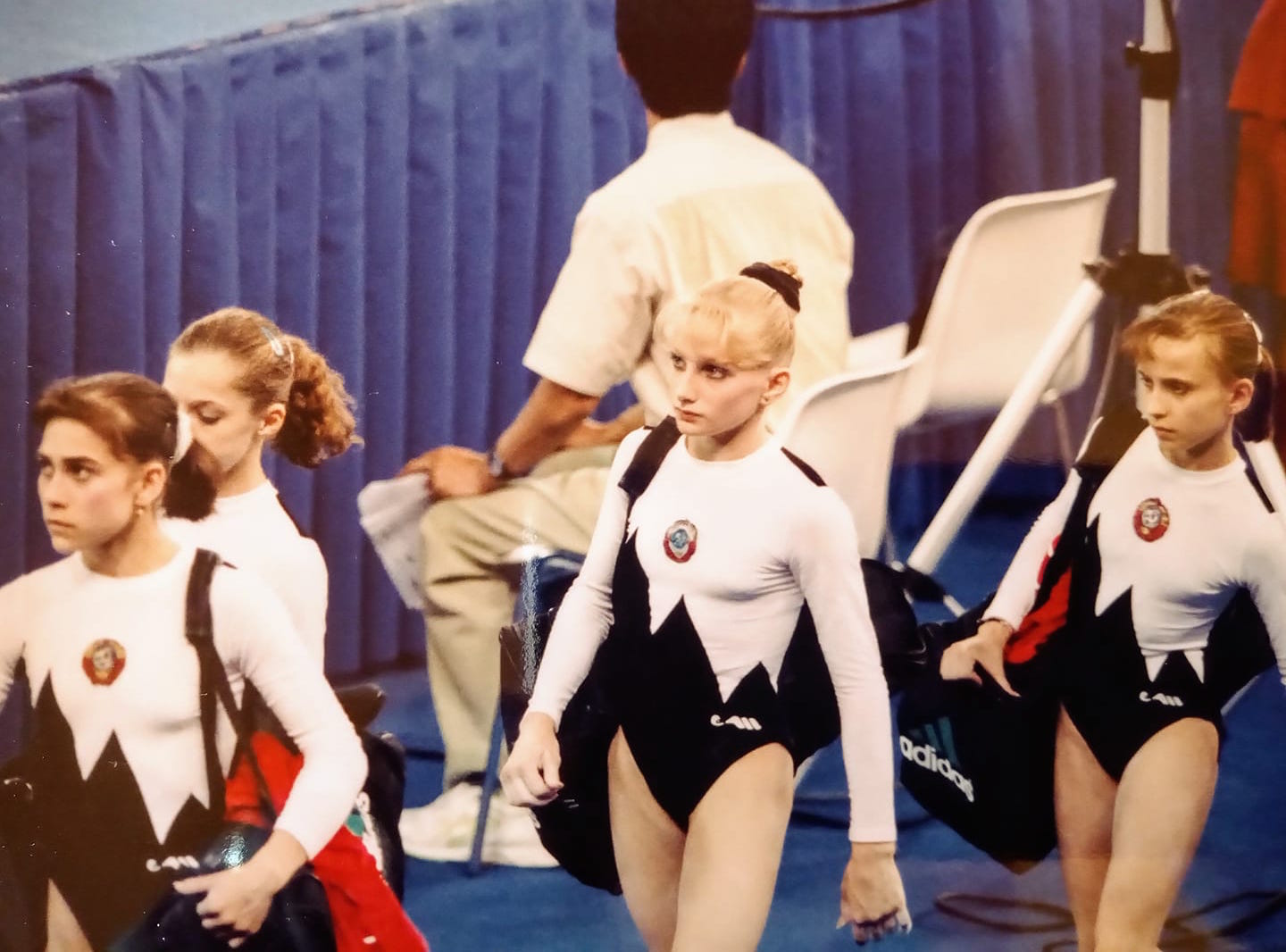In the past I’ve made casual references to the Eastern Bloc gymnastics programs in women’s artistic gymnastics (WAG) being so successful, they were winning 99% of the medals at the height of their dominance. In this article I’m going to put that assertion to the test and determine if the math truly holds up. But first to set the ground rules:
The Eastern Bloc is defined to include: The Soviet Union, Romania, East Germany, Bulgaria, Czechoslovakia, Hungary, and Poland. China is not a member of the Eastern Bloc.
The Medals are defined to include: Only Olympic medals won in women’s artistic gymnastics.
The Cold War is defined to include: Every Olympics from 1952 to 1992.
How many medals did the Eastern Bloc win?
During the Cold War there were 212 medals won in WAG. The math for that figure is as follows:
In every Olympics there are 18 available medals. From 1952-1992 there were 11 Olympics. The 1952 and 1956 Olympics had a 7th event adding 6 additional medals. Ties for third place added 8 additional medals to the final medal tally. 18 x 11 = 198 + 8 + 6 = 212.
There were 22 medals won by non-Eastern Bloc countries. The Eastern Bloc won 190 of 212 medals or 89.62%

How many gold medals did the Eastern Bloc win?
The Eastern Bloc won 66 of 70 medals or 94.86%. If winning 95% doesn’t sound impressive enough, just remember that this data is including the 1984 Olympics which all but one Eastern Bloc nation had boycotted.
Which provokes the question, what if we start tinkering with the data to blatantly favor the Eastern Bloc? Could we get the percentage even higher? Let’s start by removing the 1984 Olympics from the data. The new percentages are as followed:
The Eastern Bloc won 182 of 194 medals or 93.81%
The Eastern Bloc won 62 of 64 gold medals or 96.88%
We are getting closer to that coveted 99% win percentage, but I still think there is justification to tinker with the data even more. Whereas it is unfair to describe the boycotted 1984 Olympics as the Eastern Bloc being at “the height of its power,” the same could be said for the 1992 Olympics. By the time the Barcelona Olympics came around the Eastern Bloc had ceased to exist as a political entity. Communism had fallen in every European country while the Soviet Union had broken apart.
The only reason a WAG fan would classify the 1992 Olympics as part of the Eastern Bloc era is because most of the post-Soviet nations competed as a single country under the Olympic flag. Ironically, the last remaining remnants of the old Eastern Bloc was their sports teams.
But even then that assertion doesn’t quite hold up. East Germany, which had traditionally been the 3rd strongest WAG program no longer existed. Meanwhile most of the Eastern Bloc WAG programs below East Germany were in a state of full-collapse as the political and economic upheaval affecting their countries wrecked havoc on their gymnastics programs as well. Czechoslovakia didn’t even qualify a team to the 1992 Olympics. Bulgaria, which had been the strongest Eastern Bloc program after East Germany in the late 1980s had entered the 1990s needing donations from foreign sources to support itself.
With the 1984 and 1992 Olympics both removed from the data, the new percentages are as followed:
The Eastern Bloc won 169 of 174 medals or 97.13%
The Eastern Bloc won 55 of 56 gold medals or 98.21%

Japan 1976
You are probably wondering who managed to snag a gold medal away from an Eastern Bloc gymnast in an Olympics other than 1984 or 1992. Which brings us to the little known story of WAG’s 7th event that was contested only at the 1952 and 1956 Olympics. Known as Team Portable Apparatus (TPA), it was another team event that served as a forerunner to rhythmic gymnastics.
Once again I think there is justification to drop TPA from the data. The reason being it has evolved to become something more commonly associated with rhythmic gymnastics as opposed to WAG. Nor does it fit in with the traditional six WAG events in a historical context. On nearly every occasion I’ve seen it brought up in a gymnastics forum, it is because of Larissa Latynina and a confused fan trying to find her “missing” 18th Olympic medal which came in TPA.
Lastly, and I know I’m blatantly favoring the Eastern Bloc here, its not fair to compare TPA to the six major WAG events. It was a team event which put the Eastern Bloc at a disadvantage. In individual competition the seven Eastern Bloc countries could enter multiple gymnasts. In an event like All-Around Finals, they could theoretically have as many as 21 gymnasts competing for a podium spot. But in a team competition they were limited to no more than seven entrants competing for three available spots on the podium.
This made it easier for a non-Eastern Bloc power to snag a medal. Especially in the 1950s when Eastern Bloc programs such as East Germany, Romania, and Bulgaria hadn’t yet emerged as WAG powers. TPA was a legitimate event, but there is a case to be made that the only reason Sweden won two Olympic medals in TPA was because the Eastern Bloc was at a disadvantage. When TPA medals are dropped from the data, the new results are as follows:
The Eastern Bloc won 164 of 164 medals or 98.20%
The Eastern Bloc won 54 of 54 gold medals or 100%

When I started this article there were 22 Olympic medals won by non-Eastern Bloc nations. Now that TPA, 1984, and 1992 have all been removed from the data, only three medals remain. They are as followed:
(1) In 1956 Ann-Sofi Pettersson (Sweden) tied for bronze on vault.
(2) In 1964 Japan won a team bronze at the Tokyo Olympics.
(3) In 1988 Phoebe Mills (United States) tied for bronze on the balance beam.
An aficionado of Eastern Bloc WAG could argue the Eastern Bloc should receive credit for medals #1 and #3 since they technically had three gymnasts on the podium. Under this logic if a Western country wants to be credited for beating the Eastern Bloc, they have to actually beat them as opposed to simply tying them. When dropping ties to the benefit of the Eastern Bloc, the new tally would be the Eastern Bloc taking 161 of 162 available podium spots, or 99.38%.
And if said aficionado wants to take it one step further and give the Eastern Bloc every benefit of the doubt that he or she can, they could argue for the dismissal of #2 as well. This occurring under the logic that it was a team event and that Japan had homefield advantage. Thus it could be argued the Eastern Bloc won a share of every medal in the five individual WAG events over the course of nine Olympic Games.

But could we get to the 99% threshold while also counting these three medals? Yes we can.
The last trick I have up my sleeve is to invoke my points system. It works by awarding 3-points for gold, 2-points for silver, and 1-point for bronze. Gymnastics fans have largely embraced this metric and the rankings I have produced with it are some of the most popular pages on this blog.
The reason for invoking the points system is because counting only gold medals or only total medals doesn’t account for the Eastern Bloc’s overwhelming dominance in the silver medal count. As the three remaining medals demonstrate, the Eastern Bloc was so dominating that rival nations were lucky just to get a bronze medal. Should the data not reflect that?
Non-Eastern Bloc countries account for 3 points when ties are counted in favor of non-Eastern Bloc nations (option #1) and 2 points when ties are divided between the two sides equally (option #2). The data is as follows:
Option #1: The Eastern Bloc accumulated 969 out of 972 possible points, or 99.69%
Option #2: The Eastern Bloc accumulated 970 out of 972 possible points, or 99.79%
If you want to get that win percentage even higher, you could do option #3 which counts the ties in favor of the Eastern Bloc.
Option #3: The Eastern Bloc accumulated 971 out of 972 possible points, or 99.897% rounded up to 99.9%

1992 Olympics
Conclusion
So when you see me producing tweets/articles throwing around various percentages in regards to the Eastern Bloc’s success rate, this is the math behind it. And my terminology changes based on the percentages in question.
“At the height of its power” is a reference in the nine Olympics in which the eastern Bloc was at full strength, everything in between 1952-1988 with the exception of the 1984 Olympics. Phrases such as “throughout the entirety of the Cold War” is a reference to all 11 Olympics from 1952-1992.
The point of this article is to play with the data and see how much I can tinker with the numbers to make the Eastern Bloc success rate appear as high as possible. I did so while maintaining valid reasons for making those adjustments to the data. Just remember that I am taking numerous liberties with the specific intention of making the Eastern Bloc appear to be as dominant as possible. I’m doing it while excluding the World Championships data where most of the Eastern Bloc’s losses occurred.
I feel the data is fair, but it should be remembered that I was intentionally skewing things to the benefit of one specific group of nations and make that group appear to be as successful as possible. But whether it be 89.62% or 99.99%, the Eastern Bloc’s success rate was incredible and veterans of these programs have much to be proud of over what they accomplished.


